Have you ever wondered what it would be like to develop your own film in the comfort of your own home, without having to rely on costly and potentially hazardous chemicals? Now you can! In this blog post, we provide a helpful guide – meaning that you can create beautiful photographs without worrying about harmful chemical exposure.
Why Develop Film at Home With Less Harmful Chemicals?
Developing film at home provides a number of benefits. Not only can you save money on chemical and equipment costs, but you can also reduce the environmental impact of your film process. By using less harmful chemicals to develop your film, you are helping to reduce the amount of hazardous waste produced by traditional darkroom processes. Plus, it’s much easier to control the temperature and chemistry of your own setup than when developing in a commercial lab.
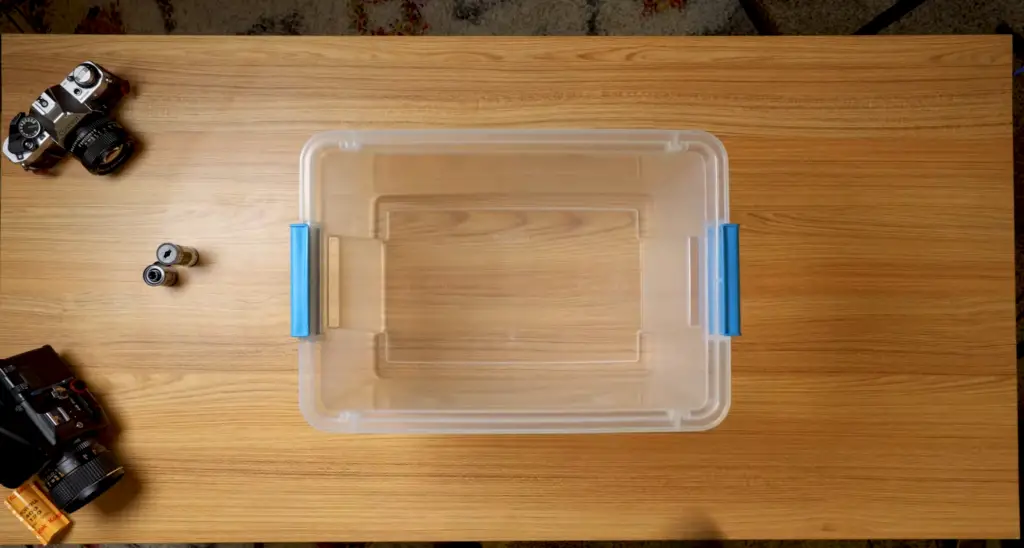
Additionally, it gives you full creative control over the entire process from start to finish. You’ll be able to adjust processing times and temperatures as needed for different types of films or special effects, allowing you to explore unique ways of processing photos with great results.
The key to successful home film development is understanding the process and selecting the right chemicals.
Developing Film The Traditional Way Can Be Expensive
It requires a number of chemicals and equipment that must be purchased, which can add up quickly.
Fortunately, there are ways to develop film without having to incur these costly expenses or have access to a dedicated space.
Developing Film Can Impact the Environment
Can Photographic Darkroom Chemicals Be Dangerous?
Darkroom chemicals can be dangerous if not handled and stored properly. Safety gear is a must, including rubber gloves, safety glasses or goggles, and an apron or other protective clothing. You should also ensure that your working environment is well-ventilated. Additionally, it’s important to store all your developing equipment in a cool, dry place so that they do not degrade over time. It’s best to keep darkroom chemicals out of reach of children and pets.
Once you’ve taken all the necessary precautions for the safe handling and storage of darkroom chemicals, you can begin to develop film without chemicals. This process requires a few simple steps and can be completed with everyday items that you probably already have in your house.
Photographic Darkroom Chemicals and Pregnancy
If you are pregnant, developing film without chemicals is an important consideration. The use of some darkroom chemicals, such as formaldehyde and potassium bromide, can be hazardous to your health while pregnant because of their potential to cause birth defects. Therefore, it is highly recommended that you avoid any contact with these chemicals. If you have been using darkroom chemicals prior to becoming pregnant, it would be best to stop using them until after childbirth.
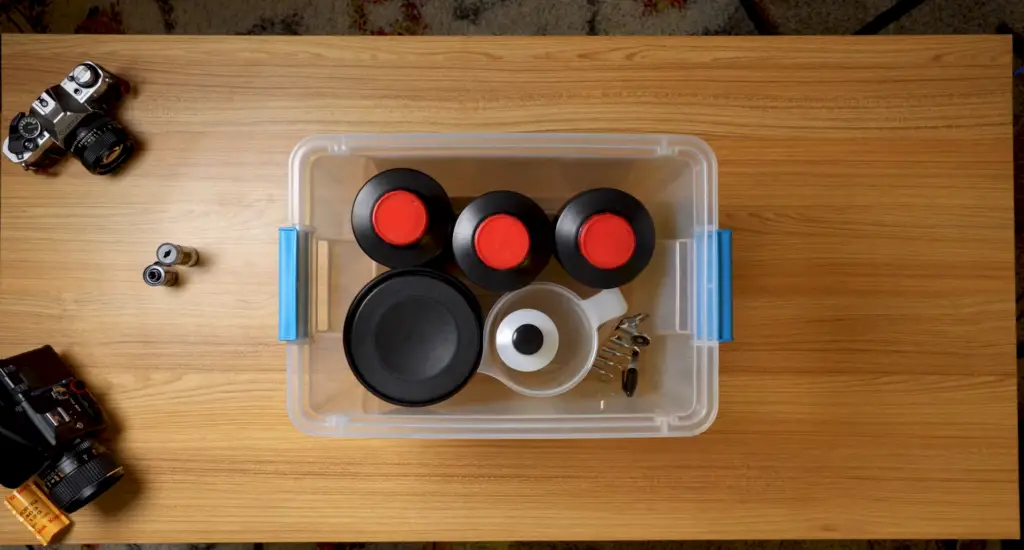
Other chemical solutions used in the darkroom usually contain silver nitrate or acetic acid which should also be avoided during pregnancy due to their toxic properties. Additionally, the fumes released from these solutions may also present a risk, so make sure to work in a well-ventilated area and wear proper chemical handling gloves.
Lastly, if you are pregnant and decide to continue developing film with chemicals, make sure to take all appropriate safety precautions. Be sure to read the entire Material Safety Data Sheet (MSDS) for any of the solutions that you use in order to understand the potential risks associated with them. Additionally, consider investing in an air filter or other ventilation system as an extra precautionary measure.
Developing your own film without using any type of darkroom chemicals can be done safely while pregnant and is highly recommended for expectant mothers who wish to continue this hobby. There are several methods available that do not require any dangerous chemicals and can be done in the comfort of your own home. Be sure to research these methods thoroughly before starting to develop film in order to ensure that you are taking all necessary safety precautions.
Developing film without chemicals is a wonderful way to continue your hobby during pregnancy while protecting both yourself and your baby from potentially dangerous materials. So, make sure to take the time to learn more about how you can do this safely so that you can have peace of mind while continuing this enjoyable activity!
Darkroom Chemical Smell Sensitivity
Many people find the smell of darkroom chemicals too strong and unpleasant. By avoiding these, you can still get great results in your home darkroom without worrying about the smell.
Developing film without chemicals is actually surprisingly easy. You’ll need a few pieces of equipment such as trays, tongs, clips and measuring cups, but these are all relatively inexpensive items that you can find easily online or in camera stores. You’ll also need some special developers for B/W film and color negative films, but they don’t have any strong odors like chemical developers do.
There are some ways to develop film without chemicals. One popular method is wet processing, which involves using liquid solutions to wash and clean the film at controlled temperatures. This is great for beginners because it can be done with minimal equipment and doesn’t require expensive darkroom chemicals. Another popular method is dry processing or scanner processing, which uses a digital scanner to scan the exposed film into your computer, where you can edit and print out results. [1]
Developing film without chemicals is an incredibly rewarding experience that will give you beautiful prints of your photos. With just a few pieces of equipment and some basic knowledge, you can easily create amazing results in the comfort of your own home!

Can you Develop Color Film Without Darkroom Chemicals?
Yes, you can develop color film without chemicals. There are a few different methods you can use to achieve this goal.
The first is an all-in-one kit that includes everything you need for developing your own color film without any chemicals. These kits usually come with a set of instructions and allow you to process your film quickly and easily in the comfort of your own home.
Another option is to purchase special development tanks designed specifically for processing color reversal films, such as Kodak Ektachrome. These tanks work just like regular black-and-white development tanks, but they require no chemicals or additional equipment aside from what comes in the package.
You can also purchase pre-prepared chemical kits that come with all the necessary chemicals and instructions for processing your own color reversal films. The advantage of these kits is that they are less expensive than buying each component separately, and you don’t have to worry about creating a darkroom or disposing of hazardous chemicals.
Finally, there are digital solutions available for developing color film without any additional equipment or chemicals. Digital development systems require no darkroom setup and work by scanning in your negatives and then performing digital manipulations on them to create the final image.
How To Be Eco-Friendly When Developing Photographic Film
Developing film at home can be a great activity for those passionate about photography. You can save time and money over taking it to a professional lab. However, most traditional methods of developing involve the use of hazardous chemicals that are not only harmful to the environment but also potentially dangerous to you.
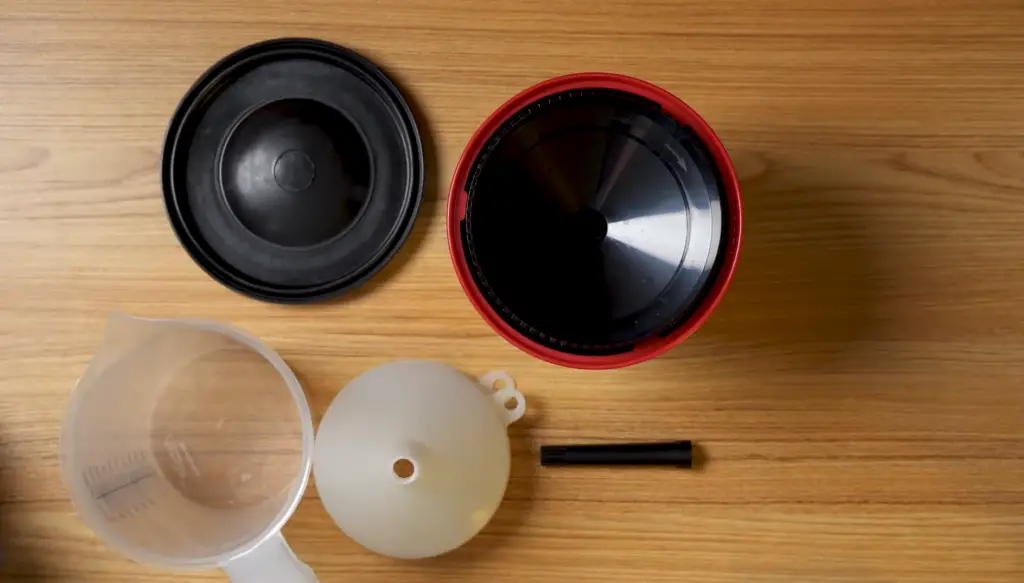
Fortunately, there are ways to develop photographs at home without using chemicals. Using some common household items and digital tools, it is possible to achieve nearly professional results with no toxic substances involved! Here are our recommendations for eco-friendly approaches:
- Go Digital- A digital approach is by far the easiest way to develop photos without harming the environment. All you need is a film scanner or dedicated photo-editing software and you can develop your photos right from the comfort of your home. There’s no waste or exposure to hazardous chemicals, so this option is perfect for those looking to stay eco-friendly.
- Use Rodinal- Rodinal is an all-in-one chemical that can be used as a developer, stop bath and fixer in one solution. It produces excellent results with minimal environmental impact as it does not contain any heavy metals like other conventional developers do.
- Try Caffenol Another great alternative to traditional developing methods is Caffenol. This unique process involves using coffee powder and washing soda to develop film in place of hazardous chemicals. It’s an incredibly simple and safe method that produces stunning results with no toxic waste!
By using these options, you can achieve professional results without compromising your values or damaging the environment.
General Steps for Developing Black and White Film at Home
Developing B/W film without chemicals is a rewarding experience that can be achieved with few materials. You’ll need:
- A 35mm film reel or tank
- Digital thermometer with a temperature range between 30 to 40 degrees Celsius (86 to 104 Fahrenheit)
- Two containers – one to hold the developer mixture and one for water
- Waterproof gloves
- Developer solution
- Stop bath solution
- Fixer solution
- Clothespins, twine, string, rubber bands or paper clips for securing the film in the development tanks.
Once you have gathered all of your supplies, the steps involved in developing B/W film without chemicals are as follows:
- Preparing the Tank/Reel – Start by attaching a leader tape to both ends of the reel or tank. This is done to make sure no film is lost during the development process.
- Loading the Film – Carefully load the developed film into your tank/reel, making sure it has been securely attached and there are no air bubbles trapped between the frames. It can also help to use a pair of tweezers when loading particularly thin films into a reel/tank.
- Pre-soak – Fill your container with warm water (around 30 degrees Celsius or 86 Fahrenheit) and submerge the loaded reel/tank for around 1 minute to allow dust or dirt particles to be rinsed away before developing.
- Developing – Mix up your developer solution according to instructions and pour it into your container. Submerge the loaded reel/tank into the solution for around 7 minutes, agitating it lightly at 10 second intervals to ensure even development.
- Stop Bath – Once the developing process is complete, pour out your developer mixture and replace it with a stop bath solution for around 1 minute. This helps neutralize the developer and stops any further film development after this point.
- Fixing – After the stop bath, pour out your stop bath mixture and replace it with fixer solution for around 5 minutes. The purpose of fixing is to remove any remaining silver halides from the film which could cause fogging or staining if left in contact with light.
- Rinse – After the fixing process is complete, pour out your fixer solution and replace it with warm water for around 5 minutes. This helps rinse away any remaining fixer solution to ensure that no chemical residues are left on the film.
- Drying – Once rinsing is complete, carefully unload the reel/tank and hang up your film using clothespins, twine, string, rubber bands or paper clips. Allow to air dry in a dust-free environment before removing from the line.
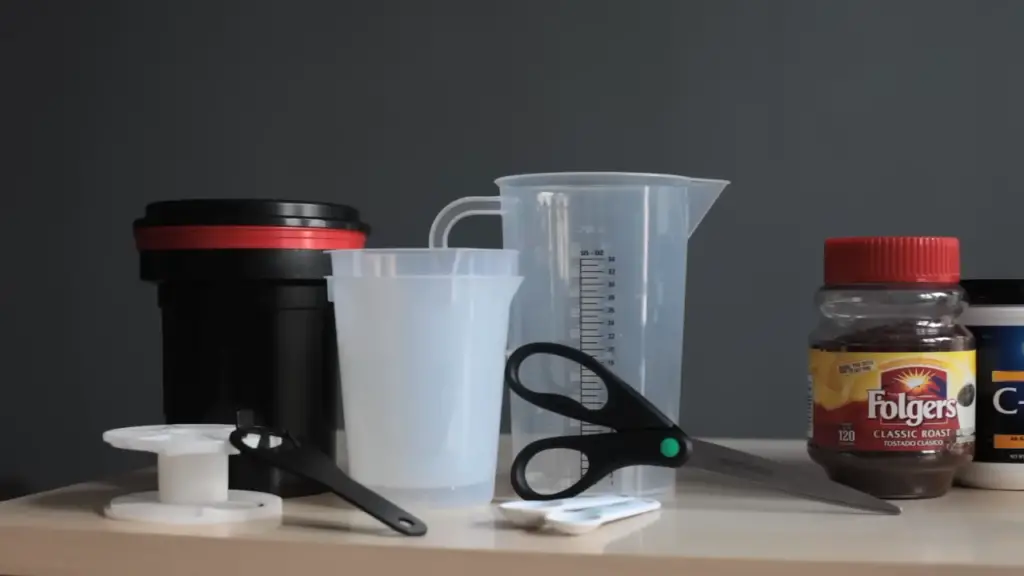
Iford Pop-Up Darkroom
For those who want to take film developing to the next level, consider investing in a pop-up darkroom. The Ilford Pop-Up Darkroom is an excellent option and comes with everything you need for chemical-free film development. This includes a lightproof tent, a 5×4 sheet of black photographic paper, and a tray set for mixing chemicals and developing films at home. Additionally, it also has a thermometer and timer which can help you to accurately measure temperature and time during the process.
The next step is to set it up and start experimenting with different techniques. It’s important to remember that film development takes time, so be patient and enjoy the process! If you’re new to this, we recommend starting with simple steps like using B/W developer only for a few minutes. This will give you an idea of how everything works before proceeding to more complex processes such as color development or toning prints.
The Ilford Pop-Up Darkroom can help take your film photography skills up a notch – allowing you to create stunning images without any harsh chemicals! If this sounds like something that appeals to you, then this is the perfect choice for developing film without chemicals.
A Case For Using A Traditional but More Eco-Friendly Fixer
Once you’ve exposed your film and it’s been waiting for a while, you need to use a fixer to make sure the image will last. Developing without chemicals is still possible but requires a bit more effort. You will need to build or purchase a device called a coprocessor, which uses a combination of heat and light exposure to fix the film. The process isn’t as complex as traditional darkroom developing because the coprocessor does not require any additional chemical solutions; all that’s required is the proper placement of your film inside the processor. It may take some trial and error before you find success with this method, but once you do, it can be an effective way to develop film without using chemicals.
The benefits of this method are that it is much more eco-friendly than traditional developing. Additionally, the process itself can be simpler and quicker, with less risk of making mistakes along the way. Furthermore, if you have access to a processor already or know someone who does, then you won’t need to purchase any additional equipment.
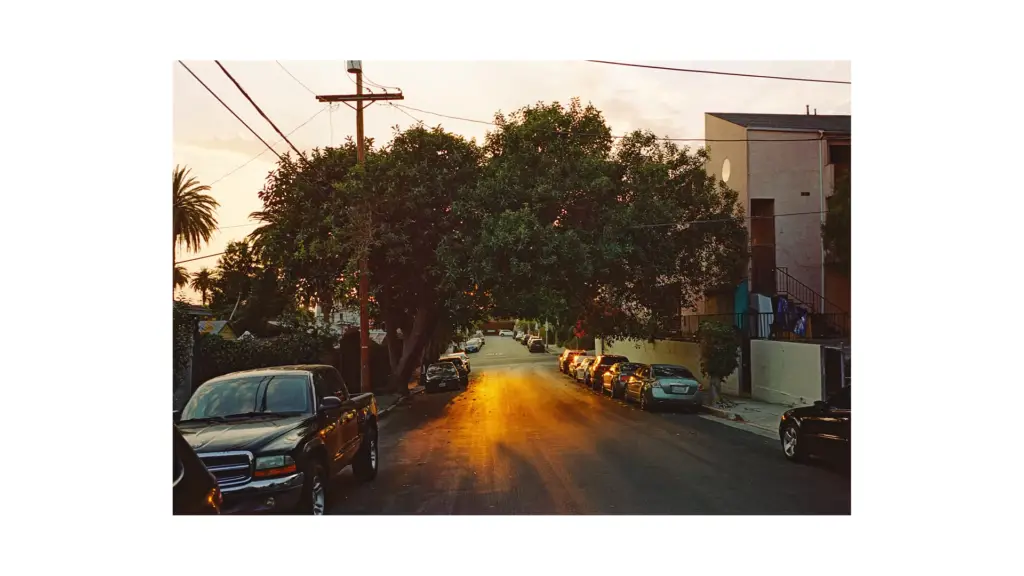
Ultimately, how you develop your film is up to you and depends on what works best for your situation. If you have the time and resources available to successfully use a coprocessor, then it can be a great option for developing film without chemicals. It may take some practice before you get the hang of it, but once you do, you can enjoy the benefits of developing your own film without any additional chemicals.
Developing Photos at Home with Coffee
Developing photos with coffee can be a fun and simple way to create beautiful images without the need for expensive chemicals or equipment.
What is Caffenol?
Caffenol is a type of liquid developer used to develop B/W film. It’s made from coffee, washing soda, vitamin C and table salt, which can all be found in any grocery store.
The strength of the caffenol you use will depend on the kind of film you are using and how long you want to develop it for. Generally speaking, the higher strength solutions will give you more contrast in your photos.
The Materials and Ingredients
To develop photos with caffenol you will need the following materials and ingredients:
- Coffee (the stronger, the better!)
- Washing soda (sodium carbonate)
- Vitamin C (ascorbic acid)
- Table salt
- A developing tank or container to hold your liquid developer. This can be as simple as a plastic container or bowl that you don’t mind getting wet.
- Measuring cups/spoons and graduated cylinders to accurately measure your ingredients.
- A thermometer to make sure your caffenol solution is at the right temperature before use.
- A timer to keep track of how long your film has been in development.
- An alternate source of warmth such as a warm bath or a heating pad (optional).
How to Mix and Develop Your Film with Coffee
One of the oldest and most accessible methods for developing film without chemicals is using coffee! This method has been used by photographers since the early days of photography, and many people still swear by it. Here’s how to mix and develop the film with a cup of joe:
- Brew one cup of strong coffee. Make sure to use dark-roast beans for this step as they contain more soluble solids that will be necessary for developing the film.
- Let the coffee cool completely before pouring it into a clean container like an old beer bottle or pickle jar.
- Use tweezers to gently place each frame from your exposed roll of film into the cooled coffee solution. Make sure to handle the frames with care as they are very delicate!
- Let the film soak in the coffee for about 5 minutes and then carefully remove each frame, one at a time.
- Place each frame onto a clean surface and let it air dry for several hours or until it is completely dried out. Once all your frames have been developed, you’re ready to get to lookin’ at your results!
By using this method, you can easily develop your own film without having to buy expensive chemicals or utilize specialized equipment. Coffee may not be the most scientifically exact way of developing film but it will certainly provide satisfactory results if done correctly!

Developing Photos at Home with Beer
You may not have thought of it before, but you can actually develop photos with beer! Plus, it’s an easy and affordable way to reuse that last pint or two from your fridge.
What is Beerenol C?
Beerenol C is the key ingredient in this beer-based method of developing film. Developed in 1979 by German photographer Rüdiger Koch, Beerenol C is a mixture of potassium metabisulfite and hop extract that acts as a substitute for traditional chemical developers. It’s also known as “Beer Developer” or “Beer developer concentrate” and can be easily found online.
How to Develop Photos with Beer
To develop photos with beer, you will need:
- Beer (your favorite brand)
- Beerenol C
- A darkroom or changing bag (or any place where light won’t expose your film)
- Developing tanks and reels
- A thermometer
- An enlarger or printing frame (this step is optional, but it will come in handy if you want to make prints of your photos for framing or scrapbooking).
Here’s how to get started:
- First, mix Beerenol C with lukewarm beer until all of the concentrate has dissolved completely. The ratio should be one part Beerenol C to nine parts beer, but this can vary depending on the brand and strength of your beer.
- Next, add the mixture to a developing tank filled with warm water (between 68-77°F). Make sure that the tank is filled with enough liquid to cover your film.
- Insert your exposed film into the developing tank and agitate it for about 10 minutes to make sure that all of the chemicals are evenly distributed.
- Lastly, remove the film from the tank and place it in a changing bag or darkroom. Once you’re finished, hang up your photos to dry and enjoy!
- Developing photos with beer is a great way to save money on traditional chemical-based methods while still getting high-quality results.

Developing Photos at Home with Wine and Vitamin C
By using wine and vitamin C, you can create beautiful, vibrant prints in the comfort of your own home. Here’s how:
- Choose a white or red wine (white will produce lighter colors). Pour some into a container big enough for your film to fit.
- Add about one teaspoon of vitamin C powder per cup of wine used and mix well until it’s completely dissolved.
- Immerse your photo paper in the mixture for up to 15 minutes depending on what look you’re going for; shorter times will result in softer images with pastel-like colors, while longer times will yield sharper prints with bolder tones.
- Rinse the paper in clean water to remove any excess chemicals and hang it up somewhere to dry.
- Once your photo is completely dry, you can begin scanning or printing your masterpiece! [2]
Developing photos at home without chemicals can be a great way to get creative and experiment with different looks for your photos. By using wine and vitamin C, you can create beautiful prints without the need for harsh chemical solutions and special equipment.
FAQ
How to easily develop film at home?
First, you’ll need to purchase a reusable cartridge that is designed to develop film without any chemicals. These cartridges are usually made of plastic and have two chambers – one for the developing liquid and another for the stop bath. To start, fill both chambers with clean water. Next, place the exposed film into the chamber containing the developing liquid and press down on the top of the cartridge several times to ensure all exposed parts are being evenly developed. Then, move the film into the next chamber – which contains the stop bath – for 5-10 seconds before removing it. Finally, hang up your newly developed photographs to dry and voila! [3]
Do you need chemicals to develop film?
The short answer is no! You can develop film without using any chemicals. This can be done with simple items that you probably already have in your home, such as a sink, water, and everyday household items like coffee and baking soda. To get the best results from developing film without chemicals, it will take some practice to perfect the process. [4]
What chemicals do you need to develop film at home?
Developing film at home does not require any chemicals, so you don’t need to worry about purchasing and storing potentially hazardous materials. Instead, you will use a few everyday items: distilled white vinegar, water and possibly some scissors or other cutting tools depending on your desired method of development.
To start with, fill a container that can fit the entire roll of film with room-temperature distilled white vinegar. Then cut the roll of film into smaller strips – about 4 inches long. Gently submerge the strips into the container filled with vinegar for one hour before transferring them to a bowl or container filled with room-temperature water. Shake off any excess vinegar before moving onto the next step in developing your films at home without chemicals.
Finally, you will need to place the strips of film in a box or container with a lid so that they can dry. Once they are completely dry, your films are ready for viewing – congratulations! You have successfully developed some beautiful photos without any chemicals.
Developing film at home is an easy and safe way to get creative with photography.
Is it possible to develop color film at home?
Yes, it is possible! All you need is some basic knowledge and the right equipment. You’ll need a changing bag, an enlarger or contact printer, a thermometer, plastic tanks with lids and clips, jugs for water and developer solution, fixer bath solution (optional if using black & white film), stop bath solution (optional if using B/W film) and photo-flo solution (can be used with both color and B/W films). You will also need to purchase photographic paper or stock up on printable CD/DVDs in order to make prints of your developed films.
Once you have all the necessary equipment, begin the process of developing your film. Begin by setting up your changing bag and attaching the thermometer to it. Then fill the plastic tanks with water and developer solution according to the instructions provided on the packet. Once you have done this, get your film out of its packaging and insert it into a reel that fits inside one of the tanks. You may need someone’s help here as reels can be tricky to put together correctly. Now close the lid tightly and submerge it in water for five minutes so that everything is at an equal temperature before you start developing. [5]
Carefully attach the lid with clips to create a tight seal and place it onto an enlarger or contact printer device.
Useful Video: How to Develop Color Film at Home – In Depth Tutorial
Conclusion
Now that you know all the steps for developing film without chemicals, you are ready to start creating some beautiful photographs! The materials required for this process are relatively simple and inexpensive. It is important to remember that patience and precision are key when it comes to developing your own film. Be sure to take your time and pay close attention, so that you can get great results every time. Finally, don’t be afraid to experiment with different techniques or materials to find what works best for you. With a bit of practice and dedication, soon enough you will become an expert in developing film without chemicals! Good luck!
References
- https://www.reed.edu/ehs/safety-information-and-programs/index/d/Darkroom-Safety-info-sheet.pdf
- https://thephotographyprofessor.com/3-ways-to-develop-film-at-home-in-a-more-eco-friendly-way/
- https://www.format.com/magazine/resources/photography/how-to-develop-film-35mm-120
- https://www.photoworkout.com/develop-film-at-home/
- https://shootitwithfilm.com/develop-color-film-at-home/





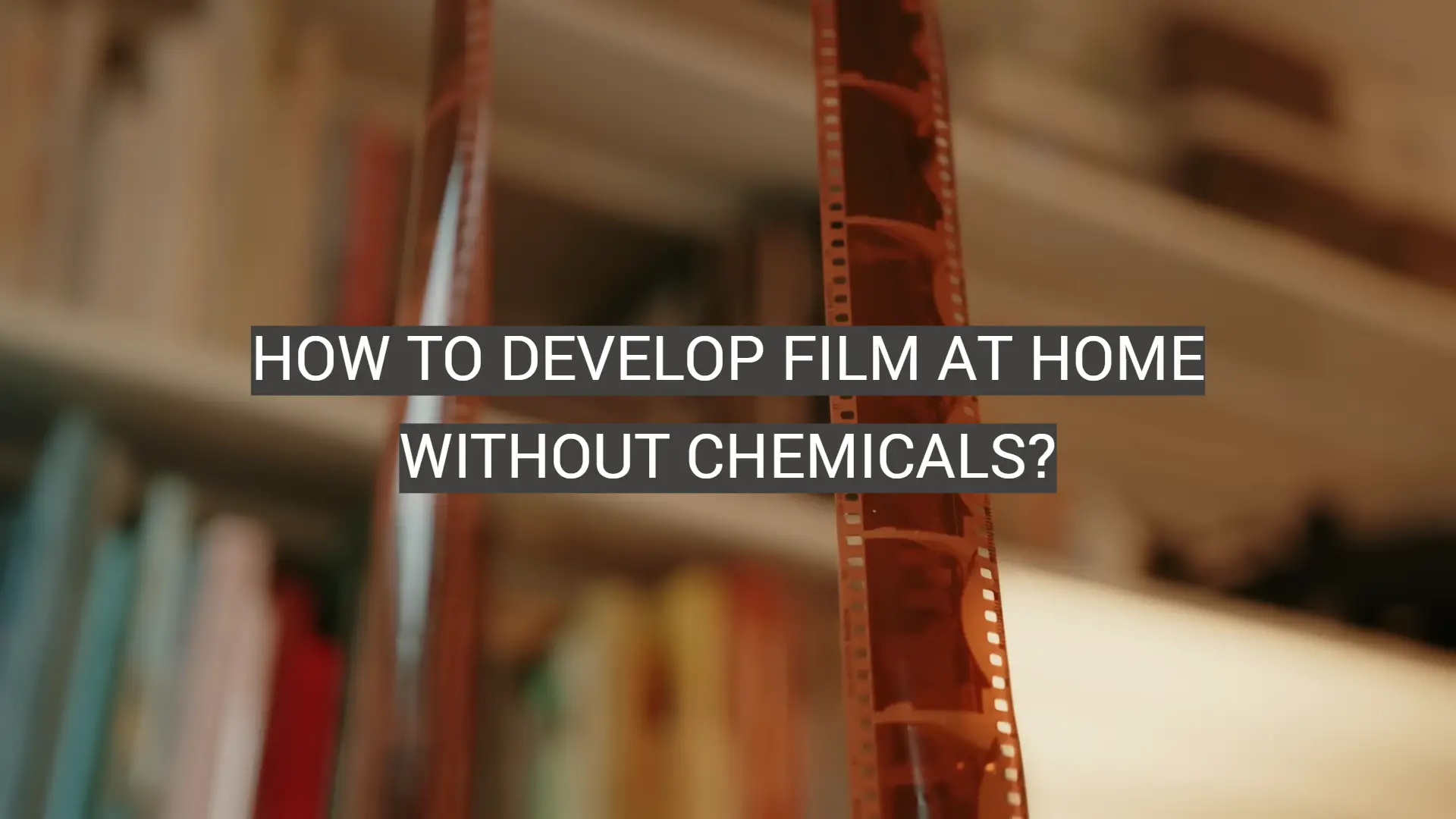
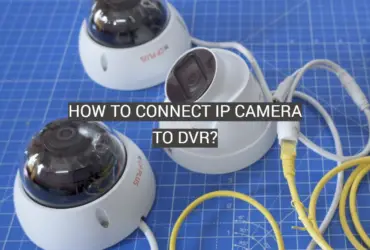



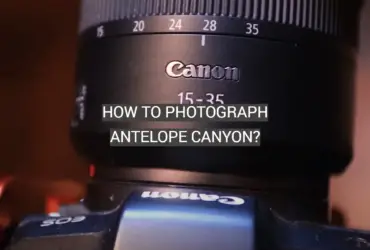

Leave a Reply